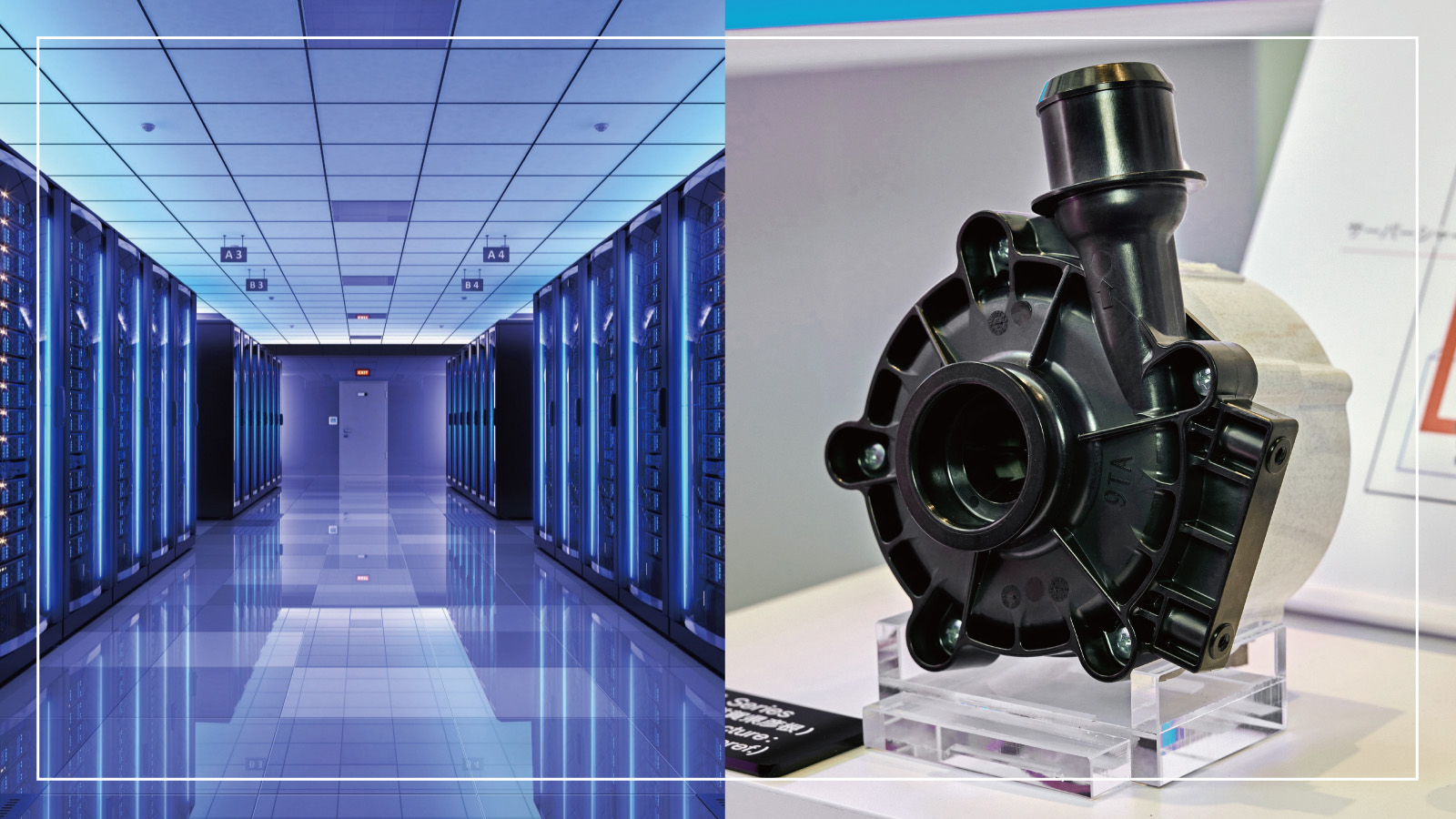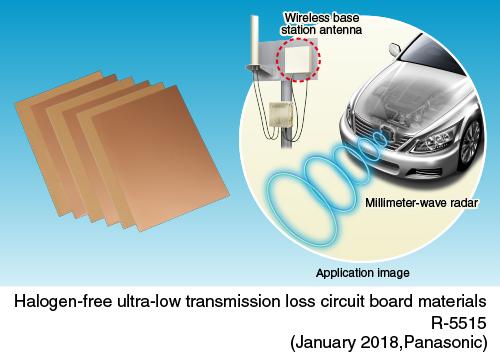
Nov 18, 2025
- Products & Solutions
- Stories
- Operating Company
Jan 11, 2018
Products & Solutions / Press Releases
The material is suitable for Millimeter- wave Band Antenna circuit boards for radar and wireless communication. This material provides excellent processability and reduces processing cost in the antenna circuit board manufacturing

Osaka, Japan - Panasonic Corporation has developed "Halogen-free Ultra-low Transmission Loss Circuit Board Material (Product No. R-5515)". This material is suitable for millimeter-wave band [1] antenna circuit boards and will start mass production in April 2019. It achieves the industry's lowest(*1) transmission loss [2] in the millimeter-wave band signal with thermosetting resins. As the result, it achieves higher transmission efficiency and lower losses of antenna signal, and also reduces the processing costs.
Sensing technologies are advanced rapidly that realize advanced driver-assistance systems (ADAS) and autonomous driving by millimeter-wave radar [3] and communication. Antenna circuit boards that transmit/receive millimeter waves require low transmission losses. Currently, fluororesin circuit board materials [4] are mainly used as antenna circuit board materials. However, the resin is expensive and their processing during board manufacture is difficult due to the resin properties. Panasonic's proprietary resin design technology and its low-profile copper foil bonding technology has enabled the development of a " Halogen-free Ultra-low Transmission Loss Circuit Board Material," which achieves both low signal transmission losses and excellent processability.
Millimeter-wave band antenna circuit boards (e.g., antenna circuit boards for automotive millimeter-wave radar and wireless communication base stations), high-speed transmission circuit boards, etc.
This material will be exhibited at the 19th Printed Wiring Boards EXPO from January 17 to 19, 2018 at Tokyo Big Sight.
The market demands circuit board materials with high versatility to replace the current mainstream fluororesin circuit board materials from the viewpoint of processability and the cost of antenna circuit boards. Panasonic's proprietary resin design technology and low-profile copper foil bonding technology has enabled the development of a circuit board material that achieves the lowest transmission loss for a thermosetting resin. Its low transmission loss property, which is equivalent to or lower than that of fluororesin circuit board materials, achieves higher efficiency and lower losses of millimeter-wave band antenna.
Fluororesin circuit board materials are difficult to process by drilling and plating during manufacturing due to resin properties and also incur high costs because they require special manufacturing equipment. Since this is a thermosetting resin material, processing is easy using existing equipment for general-purpose circuit boards. This enables fluororesin circuit board materials to be replaced, reducing the processing costs of circuit boards.
The demand for multi-layered module circuit board with integrated antenna is rising due to compact-sizing and the cost reduction of millimeter-wave band modules. Because fluororesin circuit board materials are thermoplastic, it is difficult to collectively press them with glass epoxy circuit board materials (which are thermosetting resins) for multi layers. Since this is a thermosetting resin material, collective pressing is easy with glass epoxy circuit board materials to achieve multi layers and cost reductions for multi-layered module circuit board with integrated antenna.
Panasonic Corporation is a worldwide leader in the development of diverse electronics technologies and solutions for customers in the consumer electronics, housing, automotive, and B2B businesses. Celebrating its 100th anniversary in 2018, the company has expanded globally and now operates 495 subsidiaries and 91 associated companies worldwide, recording consolidated net sales of 7.343 trillion yen for the year ended March 31, 2017. Committed to pursuing new value through innovation across divisional lines, the company uses its technologies to create a better life and a better world for its customers. To learn more about Panasonic:
http://www.panasonic.com/global
Panasonic Corporation
Tel: +81-(0)3-3574-5664
The content in this website is accurate at the time of publication but may be subject to change without notice.
Please note therefore that these documents may not always contain the most up-to-date information.
Please note that German, Spanish and Chinese versions are machine translations, so the quality and accuracy may vary.